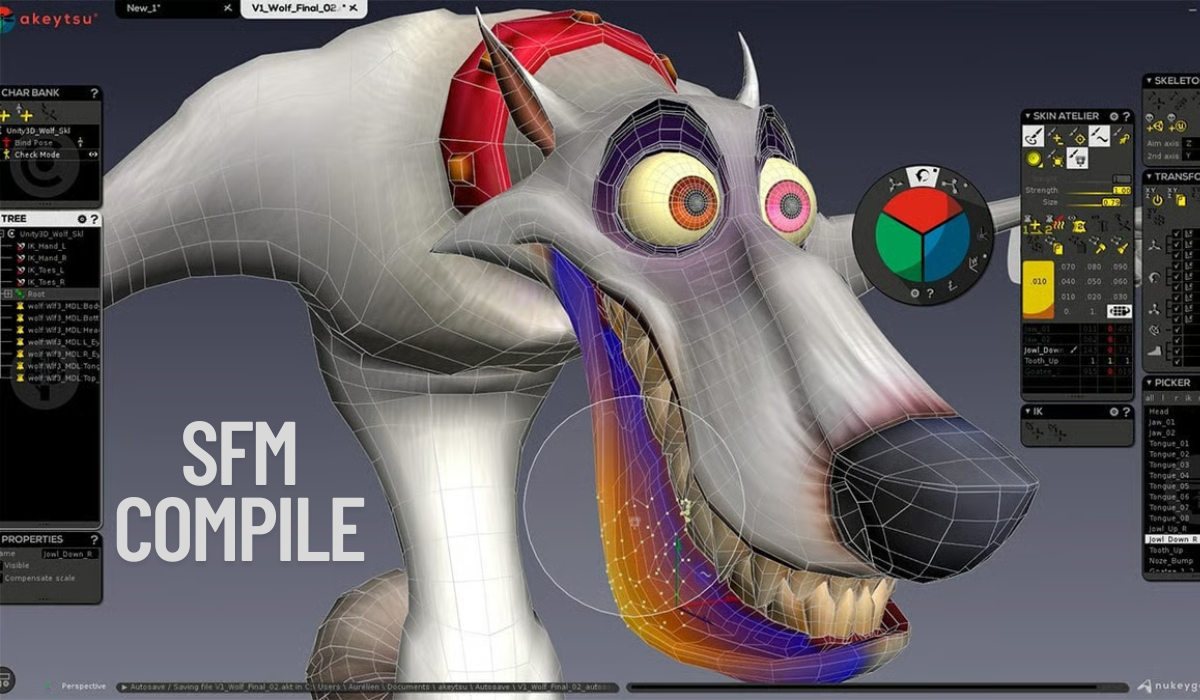If you’re new to Source Filmmaker (SFM) or have come across the term “SFM compile” in the context of 3D animation or software development, you might be wondering what it actually means. Whether it’s about compiling 3D models for SFM animations, exporting a completed project into a video, or addressing common errors, we’ve got you covered.
This post will break down what “SFM compile” means, provide detailed steps you can follow, and answer frequently asked questions to help you master the concept.
What Does “SFM Compile” Mean?
The term “SFM compile” can hold different meanings depending on context. Here are the most common ways it is used in relation to Source Filmmaker, a 3D movie-making tool developed by Valve:
1. Compiling Models for SFM
This refers to the process of converting 3D models, created in tools like Blender or Maya, into a format (e.g., .mdl files) that can be used within SFM. It involves several tools and processes outlined below.
2. Compiling SFM Projects into Videos
Once you finish animating a scene in SFM, compiling refers to rendering your project into a video format like MP4 or AVI so it can be shared or uploaded online.
3. Compiling Software Packages Named “SFM”
Although less common, “SFM compile” may also appear in software development contexts, where it could refer to building a software package or features labeled under “SFM,” such as Statistical File Manager or System File Manager.
1. Compiling Models for SFM
If you’re looking to add unique props, characters, or environments to your SFM project, you’ll need to compile them properly. Here’s a step-by-step explanation:
What You’ll Need:
- Crowbar (a tool for compiling and decompiling models)
- Blender Source Tools or equivalent 3D modeling software
- VTFEdit (for textures)
- HLMV (Half-Life Model Viewer) (to preview compiled models)
- QC (QuakeC) files (to define properties like bones and animations)
Steps to Compile Models:
- Export Your Model:
- Create your model in Blender, Maya, or another 3D program.
- Export the model as an SMD (Source Model Data) or DMX (Data Model Extension) file format.
- Prepare a QC File:
- The QC (QuakeC) file is a script that defines how your model is compiled. Include details like texture paths, animations, and physics.
- Use Crowbar:
Open Crowbar and load your QC file.
- Compile the model into a .mdl file, usable by SFM.
- Preview in HLMV:
- Use the Half-Life Model Viewer to check that your model works as expected before loading it in SFM.
- Load into SFM:
Place the compiled .mdl file and its associated resources (textures, materials, etc.) into the appropriate SFM directory.
2. Compiling SFM Projects into Videos
Once your scene is animated in SFM, you’ll want to share the final result. This is done by rendering your project into a video.
Steps to Compile a Video in SFM:
- Finalize your scene on the SFM timeline.
- Go to File > Export > Movie.
- Select your video codec (e.g., H.264) and desired resolution (e.g., 1080p).
- Choose your file format (MP4, AVI, etc.).
- Render your project and save it to your desired location.
Common Issues During SFM Compiling (Model Compilation)
If you’ve encountered errors during the process, don’t worry! Here are some of the most frequent issues and how to solve them:
- QC File Errors:
- Syntax errors in the QC script can halt the process. Double-check for typos or missing parameters.
- Material Path Issues:
- Ensure your texture files are in the correct directory and that paths in the QC file are relative to the model folder.
- Bone/Animation Problems:
- Your skeleton rigging may be incompatible with Source Engine requirements. Check that bones are named and rigged correctly.
- Crowbar Errors:
- Update your Crowbar tool to the latest version to avoid bugs and compatibility issues.
3. Useful Tips for Smooth SFM Compiling
- Use consistent naming conventions for models, materials, and files to avoid confusion.
- Test your model in HLMV before loading it into SFM.
- Keep texture paths relative to your model’s directory to maintain organization.
- Learn from existing models by using Crowbar’s Decompile feature to inspect how they are structured.
FAQs About SFM Compile
What tools do I need to compile models for SFM?
You’ll need software like Crowbar, Blender (with Blender Source Tools add-on), VTFEdit for handling textures, and HLMV for previewing models.
Why does my model not appear correctly in SFM?
This could be due to incorrect texture paths, syntax errors in your QC file, or unsupported rigging. Double-check your export settings and file paths.
How do I export my SFM project as a video?
Go to File > Export > Movie, select your codec, resolution, and file format, and render the project. Ensure your system meets the hardware requirements for smooth compilation.
Can I reuse assets from other Source Engine games in SFM?
Yes, if those assets are compatible with SFM. Use Crowbar to decompile and inspect existing models to adapt them for your project.
What is the most common issue in SFM compiling?
Texture path errors are one of the most common mishaps. Always use relative paths and ensure texture files are in the appropriate directory.
Master SFM Compile and Bring Your 3D Ideas to Life
Now that you understand the various contexts of “SFM compile,” you can confidently create custom models, render professional videos, and troubleshoot common errors in Source Filmmaker. With tools like Crowbar and VTFEdit in your arsenal, there’s no limit to the creativity and complexity you can bring to your animations.

